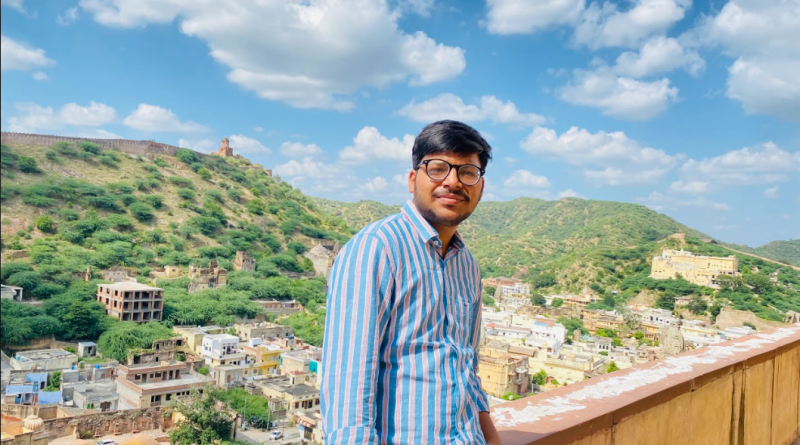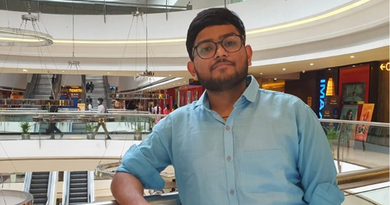Internship at JHAI, Assam: A look into the lives of flood-affected victims

About the Author: Abinash Kanti Gogoi from Ramjas College shares his internship journey at JHAI Foundation, Assam. He talks about the harsh realities of flood affected areas in Assam and the life that the troubled and neglected victims lead.
Monsoon in Assam creates a scenario of both joy and grief for its people. Primarily an agricultural state, the farmers of this region are largely dependent on the rain Gods for cultivation. The flood water rejuvenates the agricultural fields through the deposition of fertile silt. The perennial showers continue for months, both in the hills and the valley which causes the Brahmaputra along with its numerous tributaries to overflow their banks and flood the entire region. This year, 25 districts and more than 32 lakh people have been affected by floods, and over hundred people have lost their lives. However, this issue, unfortunately and unsurprisingly, fails to grab the national limelight. Since my childhood, not a single monsoon season has passed when the issue of floods hasn’t been raised. At the local level, media and political parties create a hue and cry to grab a gentle following; however, their tune changes once the flood subsides. For them, the issue is seasonal, and often the tragedy is used to push their agenda. This made me curious to visit some of the flood affected areas and get a hold of the real picture. Hence, I enrolled as an intern with a local NGO named JHAI Foundation which specializes in disaster risk-reduction interventions in flood affected char areas (temporary river islands).
There wasn’t any formal selection procedure for the internship. However, the Jhai Foundation that was set up with humane motives of harmony amongst people and nature requires interns that have a radical mindset to improve the socio-political scenario. Interns need to have a basic knowledge of research tools such as Focus Group Discussion (FGDs), Personal Interviews (PIs), and map making activities. However, I only had a vague idea about such research mechanisms; it was only after the internship that I learned how to use them. There was a telephonic interview during which I gave my introduction, and then, I was asked if I’d be able to work under difficult circumstances as the internship required extensive traveling and surveying four of the worst flood affected districts during the peak monsoon season.
Our team consisted of a senior field researcher, a photographer, and a note taker (which was me). Our main objective was to extract detailed information about the traditional flood coping mechanisms of the flood-affected areas. To efficiently carry out the collection of data, the JHAI Foundation had prepared some questionnaires which contained questions about primary health care facilities, food management mechanism, architectural adaptations, sanitation issues, year-long crop rotational program, livestock issue, traditional boat and bridge building techniques, the plight of women, etc.
First, we were required to collect the official geographical and demographic data of the assigned villages. After that, we were required to visit the assigned villages accompanied by the field officers. As a note taker, my work was to document and make notes on the activities and observe the dialogue in the process. In addition to this, I was required to take personal interviews. After these formal activities, we surveyed the villages and their borders only if time permitted us. After returning from the villages, we were required to make transcripts of the recorded data of the audio pieces which we submitted to the foundation. After making transcripts, we were able to bring to light innovative ideas; one such prominent idea was the portable hearth floating technique by inflating the lungi of lower Assam and the multi-storeyed Changs or platforms inside the Chang ghar (a house on a raised platform from the ground, similar to stilt houses).
In the first fifteen days, I got a glimpse of the harsh reality of these areas and its inhabitants. Regular loss of crops and human lives renders the villagers helpless and dwarfs their socioeconomic prospects. They hardly receive any rehabilitation for their losses. These villages remain cut off from the outside world for 2 to 3 months. Sometimes, life becomes so miserable that they can’t even afford a proper meal and they have to make do with a handful of rice every day. In search of drinking water, they have to wander off to distant places. In case they fail to find a source, they resort to drinking flood water. In many villages, we couldn’t find a single sanitary toilet; the few villages where toilets were constructed under the Swachh Bharat Mission were inundated by flood water. It was a traumatizing experience to find that the water bodies where the victims were defecating were also used as a source of drinking and cooking water.
Health care in these areas is another major issue. Most of them still follow traditional practices, some of them are effective and some are not. In one of the accounts, when we enquired about the health care facilities, the interviewee replied: “We have our traditional healers; some of our people also resort to prayers as a primary solution.” A strip of Chloroquine tablet or a pouch of ORS is a luxury even after 70 years of our country’s independence. There is a health center near the village but the doctor is hardly available during the flood season. The villagers lamented, “We have even arranged electricity for our health care center but the doctor always comes up with a new excuse and so our people have lost faith in the health care center.” It’s not that these people are reluctant to approach the medical facilities, but they aren’t left with any choice than relying on traditional remedies.
The experience in the char villages in Barpeta district was an eye opener for me. The people residing in those areas lead a very harsh life: from being regularly displaced and economically deprived to being politically victimized. The government aid in their hours of distress is minimal. Moreover, the tendency to brand these vulnerable people as illegal Bangladesh immigrants adds to their woes. However, despite all these stories of suffering and pain, there are some initiatives and interventions by some organizations which show a ray of hope. In Majuli district, people have started exploring innovative and flood resilient livelihood options like cage culture for fish farming, floating garden for vegetable cultivation, etc. Jhai Foundation, the organization which I interned in, has been working to create a model for the development of the char areas focusing on disaster resilient shelter, organic homestead garden, and floating classes for flood affected children.
Troubled by the Abinash’s retrospective journey? Do you also want to contribute to a cause? Check out these NGO internships.
Editor’s note – If you also have an interesting story to share, you can now participate in Your Internship Story Contest 2017 and win cash prizes and goodies worth INR 1 Lac!



